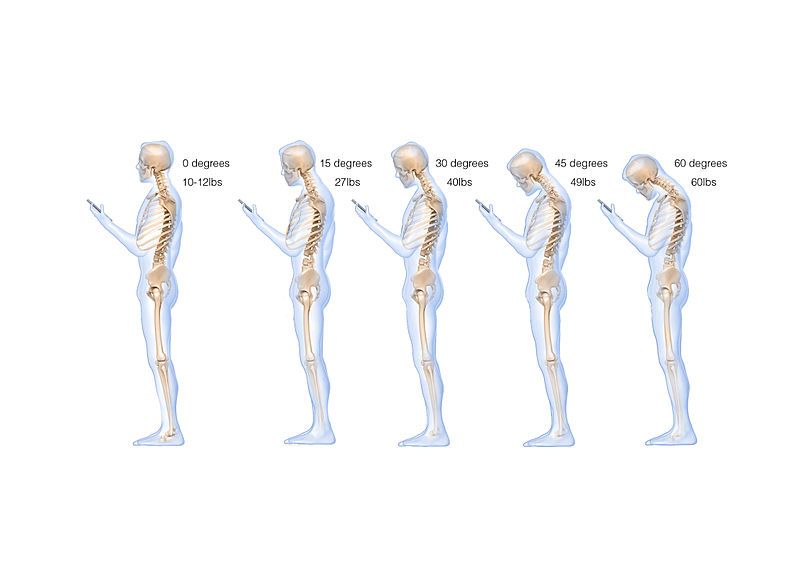The human body is an incredibly complex and intricate system. There are countless forms of minor and major ailments it can develop throughout our lifetime – from common colds to chronic conditions like hunchback. Having a hunchback, or kyphosis, can be extremely uncomfortable both physically and emotionally. For the sake of your health, mobility, and everyday confidence in yourself, it is important to consider addressing this condition promptly through specialized therapies and medical treatments depending on one’s specific needs. In this blog post we will explore what causes kyphosis as well as offer up credible tips for how to get rid of a hunchback quickly.
Contents
Overview Of The Human Body’s Complexity
What Is A Hunchback?
Before learning how to get rid of a hunchback, a hunchback is a condition in which the patient’s spine is abnormally curved, creating an unnatural outward shape. This curvature of the spine can be caused by conditions like scoliosis and osteoporosis, or from trauma to one’s vertebrae. Furthermore, poor posture can also cause kyphosis as the muscles around the spine habitually become imbalanced over time. Regardless of its origin, having a hunchback should not be taken lightly – this condition has far-reaching implications regarding your overall health and mobility in daily life.

Why You Should Know About Hunchback?
Having a hunchback can be very detrimental to your overall well-being. It can cause chronic back pain, fatigue, and even difficulty breathing in extreme cases. Furthermore, the physiological effects of having a hunchback are wide-ranging – it affects everything from muscle coordination to digestion. Knowing about this condition is essential for being proactive about managing it, as catching it early on is key for its successful treatment.
What Are The Impacts Of Hunchback On Your Body?
Having a hunchback can have serious impacts on your body. As mentioned above, the condition can cause chronic back pain, fatigue, and difficulty breathing in extreme cases. Additionally, it may also lead to poor posture over time if not addressed promptly. This can result in tremendous discomfort and an overall lack of self-confidence due to how this condition is often perceived socially.
How To Get Rid Of A Hunchback?
So how to get rid of a hunchback? Fortunately, there are a few ways to get rid of a hunchback. The first thing to do is see your doctor or physical therapist for an assessment and medical advice. Depending on the severity of the condition, you may be prescribed exercises and stretches tailored towards improving its symptoms as well as posture. It’s also important to practice good habits like sitting up straight when at a computer desk or watching TV, and being aware of your posture in general throughout your day-to-day life. Finally, using ergonomic equipment such as chairs that offer lumbar support can help to reduce strain on your back muscles.

How Long Does It Take To Fix Hunchback Posture?
The length of time it takes to fix a hunchback posture can vary from person to person. It depends on the severity of the curvature and how long it has been present, as well as how diligently one sticks to their prescribed treatment plan. Furthermore, making lifestyle changes like eating healthier, exercising regularly, and getting enough sleep will also help improve your condition quickly and effectively.
What Are Best Methods To Get Rid Of A Hunchback?
The best methods for how to get rid of a hunchback include visiting your doctor or physical therapist for an evaluation and prescribed exercises and stretches tailored towards improving the curvature of your spine. Additionally, good habits like sitting up straight when at a computer desk or watching TV and being aware of your posture in general throughout the day can help reduce strain on your back muscles.
What Are Best Tools To Get Rid Of A Hunchback?
The best tools to get rid of a hunchback include physical therapy exercises and stretches, ergonomic equipment like lumbar support chairs, and lifestyle changes such as eating healthier foods, exercising regularly, and getting enough sleep. Additionally, postural awareness throughout the day is essential for preventing your spine from becoming imbalanced again in the future.
What Are Pros And Cons To Get Rid Of A Hunchback?
Pros
Knowing how to get rid of a hunchback can significantly improve your overall well-being, both physically and emotionally. It can reduce chronic back pain, fatigue, and difficulty breathing in extreme cases. Furthermore, it will also help straighten the spine and improve posture over time, resulting in greater self-confidence.
Cons
Having to be mindful of your posture throughout the day can take some getting used to as it requires dedication and consistency. Additionally, the treatments for a hunchback may be expensive depending on one’s insurance coverage or out-of-pocket costs for buying ergonomic equipment like lumbar support chairs.
What Are Tips To Get Rid Of A Hunchback?
Getting rid of a hunchback is possible with these helpful tips:
- Seek professional advice: Visit your doctor or physical therapist for an evaluation and personalized exercises and stretches to improve your spine’s curvature.
- Maintain good posture: Sit up straight when using a computer or watching TV. Be mindful of your posture throughout the day and consider using ergonomic equipment like lumbar support chairs.
- Adopt a healthy lifestyle: Make lifestyle changes, such as eating nutritious foods, engaging in regular exercise, and getting sufficient sleep. These changes will greatly enhance your condition quickly and effectively.

Conclusion: How To Get Rid Of A Hunchback?
Finding ways how to get rid of a hunchback can be a long and difficult process, but it is possible with dedication and consistency. It requires visiting your doctor or physical therapist for an evaluation and prescribed exercises and stretches tailored towards improving the curvature of your spine, as well as practicing good posture habits throughout the day and using ergonomic equipment such as lumbar support chairs. Additionally, making lifestyle changes such as eating healthier foods, exercising regularly, and getting enough sleep will also help improve your condition quickly and effectively. With these tips in mind, you’ll be on your way to having better posture in no time.
FAQs: Hunchback
Can a hunchback be reversed?
Kyphosis is most prevalent among older women. During the initial stages, you may not exhibit any symptoms and treatment may not be necessary. However, if left untreated, kyphosis can progress and lead to substantial spinal deformities. The objective of treatment is to prevent further curvature and alleviate symptoms, although a complete cure is not feasible.
Is hunchback permanent?
Fortunately, Dowager’s Hump can be treated and, in some cases, completely cured. We suggest three stretches that are especially beneficial for alleviating neck and upper back strain, reducing headache discomfort, and diminishing the appearance of Dowager’s Hump, resulting in improved posture.
What causes a hump back?
Kyphosis is a condition characterized by an excessive, forward rounding of the upper back. In older individuals, kyphosis often arises from weakened spinal bones that become compressed or fractured. Meanwhile, other forms of kyphosis can manifest in infants or teenagers as a result of spinal malformation or gradual wedging of the spinal bones.
Is it too late to fix my hunchback?
Despite years of poor posture, it is still possible to make improvements. It may feel like rounded shoulders and a hunched stance are permanent fixtures as we age, leading us to believe that we have missed the opportunity for better posture. However, there is a strong likelihood that we can still regain a taller and more confident stance.
Why do I have a hunchback at 15?
Postural kyphosis, the most prevalent form of kyphosis, typically occurs during adolescence. It is characterized by the stretching of ligaments and muscles that support the vertebral column, caused by slouching or poor posture. As a result, the vertebrae are displaced from their normal position, leading to a rounded curvature of the spine.
What age do you get a hunchback?
Signs of the condition typically manifest during or after the growth spurt of puberty. Diagnosis usually occurs when children are between the ages of 12 and 15.
Can you massage out a hunchback?
These manual therapies offer a range of benefits, including pain reduction, improved circulation, realigned spinal cord, enhanced joint mobility, muscle lengthening, and adhesion breakdown. Among these therapies, massage therapy can be particularly effective for individuals with scoliosis, lordosis, or kyphosis.
Is hunchback caused by bad posture?
Impro posture during childhood, including slouching, leaning back in chairs, and carrying heavy schoolbags, can lead to stretching of the ligaments and muscles that support the vertebrae. As a consequence, the thoracic vertebrae may be pulled out of their natural alignment, resulting in a condition known as kyphosis.
Is it normal to have a slight hunchback?
Kyphosis is a condition where the spine curves, causing the upper back to appear more rounded than usual. It’s important to note that everyone has a certain degree of curvature in their spine. However, if the curve exceeds 45 degrees, it is considered to be excessive.
Can stress cause hunchback?
Factors such as stress, environmental conditions, and certain exercises can contribute to a hunched-over posture. Excessive thoracic kyphosis refers to an abnormal forward rounding or curvature of the middle and upper back, specifically the thoracic spine (Kendall, McCreary & Provance, 2005).
Does hunchback affect height?
Maintaining proper posture is crucial for achieving your optimal height. Over time, poor posture can cause your body to slouch and slump, which can actually hinder your true height. Our backs naturally have curves, and consistent slumping or slouching can alter these curves to conform to your habitual posture.

Trayce served as a grassroots leader and activist in Texas as President of Dallas and Texas Eagle Forum.
Trayce is Mom Caucus Member, Texas Conservative Mamas, Texas Conservative Grassroots Coalition Leader, and Grassroots America Champion of Freedom Honoree.
She currently serves as the Eagle Forum National Issues Chair on Human Trafficking.
Trayce received a Bachelor’s Degree in Marketing from Texas A&M
Currently, she homeschools her youngest child age 13 and graduated her six oldest children, ages 31 to 19.







